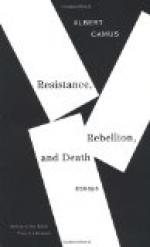Few have given the Home Office credit for the amount of interesting and cheap amusement it then afforded by parcelling out the country among the military authorities. In a period of general lassitude and holiday, it supplied the populace with a spectacle more widely distributed than the Coronation, and equally encouraging to loyalty. For it is not only pleasure that the sight of the soldiers in their midst provides: it gives every man and woman and child an opportunity of realising the significance of uniforms. Here are soldiers, men sprung from the working classes, speaking the same language, and having the same thoughts; men who have been brought up in poor homes, have known hunger, and have nearly all joined the army because they were out of work. And now that they are dressed in a particular way, they stand there with guns and those beautiful gleaming knives, ready, at a word, to kill people—to kill their own class, their own friends and relations, if it so happens. The word of command from an officer is alone required, and they would do it. People talk about the reading of the Riot Act and the sounding of the bugles in warning before the shooting begins; but no such warning is necessary. Lord Mansfield laid it down in 1780 that the Riot Act was but “a step in terrorism and of gentleness.” There is no need for such gentleness. At an officer’s bare word, a man in uniform must shoot. And all for a shilling a day, with food and lodging! To the inexperienced intelligence of men and women, the thing seems incredible, and the country owes a debt of gratitude to the Home Office for showing the whole working population that it is true. Certainly, the soldiers themselves strongly object to being put to this use. Their Red Book of instructions insists that the primary duty of keeping order rests with the civil power. It lays it down that soldiers should never be required to act except in cases where the riot cannot reasonably be expected to be quelled without resorting to the risk of inflicting death. But the Home Office, in requiring soldiers to act throughout the whole country at points where no riot at all was reasonably expected, gave us all during that railway strike an object-lesson in the meaning of uniform more impressive than the pictures on a Board School wall. Mr. Brailsford has well said, “the discovery of tyrants is that, for a soldier’s motive, a uniform will serve as well as an idea.”




